
List of photo exhibition venues and camera museums in Japan according to prefecture in alphabetical order. These galleries and museums are dedicated mainly to photography or they hold a photo exhibition on a regular basis. Most do not have information in English.
Sadly, Nikon and Canon have both closed their photo galleries/salons in provincial cities such as Sapporo, Sendai, Nagoya, and Fukuoka.
Prefecture names are linked to Google Maps.
Tokyo Art Beat provides an excellent list of current photo exhibitions in Japan at photo exhibition museums, galleries, and other spaces especially in the Tokyo area.
During any pandemic, wearing a mask is required when visiting public places in Japan, including galleries and museums.
Also read the PhotoSpaces FAQ.
Updated: May 15, 2022
- Sony Store Nagoya ソニーストア名古屋
- Fujifilm Photo Salon Nagoya 富士フイルムフォトサロン名古屋 Map
- Nagoya City Art Museum (Nagoya-shi Bijutsukan) 名古屋市美術館 – Opened in 1988, the museum is within Shirakawa Park. Mainly collects and shows paintings and prints. The photography collection centers on works by Nagoya photographers (members of the Nagoya Avant-Garde group from the late 1930s) and photographs of Mexico during the 1920s and ’30s. Holds photo exhibitions on occasion.Near three subway stations: Fushimi Station on the Higashiyama Line, get out Exit 5 and walk south for 8 minutes. Osu-kannon Station on the Tsurumai Line, get out Exit 1 and walk north for 7 minutes. Or Yabacho Station on the Meijo Line, get out Exit 4 exit and walk west for 10 minutes. Phone: (052) 212-0001
地下鉄東山線・鶴舞線「伏見」下車、5番出口から南へ徒歩8分
地下鉄鶴舞線「大須観音」下車、1番出口から北へ徒歩7分
地下鉄名城線「矢場町」下車、4番出口から西へ徒歩10分 - Wakita Gallery ワキタギャラリー – Located in a camera shop called Photo City Wakita. Near Kamimaetsu Station (Meijo or Tsurumai subway line) Exit 10. Phone: (052) 251-5226
- Hachinohe Portal Museum Hacchi 八戸ポータルミュージアム はっち
- Fujifilm Photo Salon Fukuoka (CLOSED on Dec. 23, 2020) 富士フイルムフォトサロン福岡
- NHK Gallery (Fukuoka) NHKギャラリー【NHK福岡放送局内】
- Coal Pit コールピット – Darkroom and gallery. Closed during pandemic.
- Fukushima City Museum of Photography (Hana no Shashinkan) (Fukushima-shi Shashin Bijutsukan) 花の写真館(福島市写真美術館) Map – Dedicated to flower photos. The permanent exhibition centers on Shotaro Akiyama’s donated works. Akiyama was one of Japan’s most famous photographers. He helped make nearby Hanamiyama park famous. A photo gallery for public use is also provided. 20-min. walk from JR Fukushima Station or catch a bus and get off at Hoken Fukushi Center. Phone: (024) 534-9777
- Suehiro Classic Camera Museum 末廣クラシックカメラ博物館 – The museum is in a sake warehouse. Over 600 cameras are on display. Admission 300 yen. From Aizu-Wakamatsu Station, take a local bus to Otonamachi and walk 2 min. Phone: (0242) 27-0002
- Gifu Prefectural Museum 岐阜県博物館
- Hiroshima Prefectural Art Museum 広島県立美術館
- Kure Municipal Museum of Art (Kure Shiritsu Bijutsukan) 呉市立美術館 Map – Opened in 1982 to commemorate the 80th anniversary of Kure’s founding as a city. (“Kure” is pronounced KOO-ray.) The museum is in a park on a hill affording a great view of the harbor. There are also remnants of old military facilities in the same park. The photography collection was started in 1997, and it includes works by TOMATSU Shomei, NARAHARA Ikko, KIMURA Ihee, UEDA Shoji, HAGA Hideo (ocean-related festivals), and MIDORIKAWA Yoichi (Seto Inland Sea). The theme centers on the ocean and how people live with the ocean. 10 min. walk from JR Kure Station (30 min. from JR Hiroshima Station via the JR Kure Line). Phone: (0823) 25-2007
- Fujifilm Photo Salon Sapporo 富士フイルムフォトサロン札幌 – Near Sapporo Station.
- Photo Plaza 910 フォトプラザ910”(クドウ)フォトギャラリー – Photo gallery and camera shop in Obihiro. Map
- Higashikawa Bunka Gallery 東川町文化ギャラリー – Opened in 1989 and operated by Higashikawa-cho town that declared itself a “photo town” with an annual photo festival. The gallery is one of the main venues for the festival. Exhibits photos, sculptures, pictures and literary arts. It has over 1,200 photographs by famous Japanese photographers and overseas photographers who received the town’s photo awards in the past. They include UEDA Shoji, ISHIUCHI Miyako, HOSOE Eikoh, KON MIchiko, NARAHARA Ikko, ARAKI Nobuyoshi, SUGIMOTO Hiroshi, and HATAKEYAMA Naoya. The facility also has rental galleries.Fly to Asahikawa Airport (1 hour and 35 minutes from Tokyo Haneda airport) or take a train from Sapporo (1 hour and 20 minutes via limited express). From Asahikawa Airport, take a taxi (10 min.). From Asahikawa Station, take a bus to Higashikawa (40 min.). Phone: (0166) 82-4700
- Kushiro Art Museum (English website) 北海道立釧路芸術館 – Opened in 1998, this large museum keeps a significant collection of photographs by well-known photographers such as SUGIMOTO Hiroshi, MORIYAMA Daido, FUKASE Masahisa, KAWADA Kikuji, TAHARA Keiichi, Kushiro native NAGAKURA Hiromi, and even Ansel Adams. 5-min. walk from JR Kushiro Station (walk south). Phone: (0154) 23-2381
- Art Tower Mito (English website) – Contemporary Art Gallery in Ibaraki’s capital city of Mito. Be sure to go up the tower for great views of the city.
- Shoko Shuseikan 尚古集成館 – Shimadzu family museum that opened in 1923. It has artifacts and materials tracing the history of the family. The Shimadzu (Shimazu) family was a samurai clan in Satsuma (present-day Kagoshima in southern Kyushu). In the mid-19th century, the clan was headed by Lord SHIMAZU Nariakira who acquired a daguerreotype camera from UENO Shunnojo-Tsunetari and experimented with it.In 1857, local scientist ICHIKI Shiro took a portrait of Lord SHIMAZU Nariakira, and this portrait is thought to be the oldest surviving daguerreotype taken by a Japanese photographer. It was discovered in 1975 by the Shimazu family in a warehouse. In 1999, the daguerreotype was designated as an “Important Cultural Property” by the Japanese government. It was the first photograph in Japan to be so designated. It is preserved at the Shuseikan.In 1858, Lord SHIMAZU is thought to have taken a collodian photograph of three women, titled “Three Princesses.” The image is also kept at the Shuseikan. After Nariakira, the next and last head of the Satsuma clan was Tadayoshi. He was also a shutterbug and his photos are preserved at the museum. From JR Nishi Kagoshima Station, 35 min. by Kagoshima City View bus. Get off at Sengan-en (Iso Teien). From Kagoshima Airport, 40 min. by taxi. Phone: (099) 247-1511
- Yokohama Museum of Art (English website) 横浜美術館 Map – This large-scale museum (designed by Kenzo Tange) is one of the pavilions left over from the YES Expo held in 1989. It features a number of facilities such as an Art Library, Lecture Hall, Citizen’s Workshop room, observation deck, museum shop, and restaurant. There are several gallery spaces, one of which is dedicated to photography.The Yokohama Art Museum actively pursues to expand its photography collection. It especially seeks photos showing the history of photography in Japan and the world. Early portraiture, pictorialism, and modern works. Works by early photographers such as Talbot as well as contemporary photographers such as Robert Mapplethorpe, Diane Arbus, and Robert Capa as well. Works by Japanese photographers like Domon Ken and Kimura Ihei can also be viewed. Admission is 500 yen.The excellent Art Library, which has many photography-related books, is open to the public for free. See the Web site for English directions and map. Ten-minute walk from Sakuragi-cho Station (JR Negishi Line or Keihin Tohoku Line, municipal subway, Tokyu Toyoko Line). Phone: (045) 221-0300
- Yokohama Archives of History (Yokohama Kaiko Shiryokan) 横浜開港資料館 – Established in June 1981, this museum includes a large collection of picture postcards and 19th century vintage photos of Yokohama and Kanagawa. The exhibition floor shows how Yokohama was opened up to the West. The building used to be the British Consulate. Exhibitions center on the history of Yokohama’s opening to overseas trade. The reading room is excellent for Yokohama photography research. 12-min. walk from Kannai Station on the JR Keihin Tohoku Line. You can also get off at Sakuragi-cho Station and take bus No. 8, 11, 20, or 58. Get off at Kencho-mae. The Archives is right across from the Kanagawa Prefectural Office (Kencho). Phone: (045) 201-2100
- Earth Plaza あーすぷらざ (神奈川県立地球市民かながわプラザ)
- Minato Mirai Gallery みなとみらいギャラリー【クイーンズスクエア横浜 クイーンモール2F】
- Yokohama Civic Art Gallery Azamino 横浜市民ギャラリーあざみ野
- mewe HASHIMOTO ミウィ橋本 5Fインナーガーデン – Venue for Photo City Sagamihara.
- Kawasaki City Museum (Kawasaki-shi Shimin Museum) 川崎市市民ミュージアム –
Opened in Nov. 1988, this large, imposing museum is somewhat out of the way, but well worth a visit. A few minutes by bus (for Shimin Museum) from Musashi Kosugi Station (JR Nanbu Line or Toyoko Line). It is within a large park called Todoriki Ryoku-chi. The 3-story museum’s collection includes photographs, posters, woodblock prints, videos, folk crafts, and historical artifacts like Jomon and Yayoi Period pottery dug up in Kawasaki.The museum’s collection includes photos taken in post-war Japan by 100 renown Japanese photographers such as Ueda Shoji, Akiyama Shotaro, Jumonji Bishin, and Araki Nobuyoshi. It also has a large collection of photographs by Hamaya Hiroshi. The museum holds photo exhibits in its dedicated photo gallery and major photo exhibits in a larger space. This museum was one of Japan’s first to dedicate museum space to photographs. Admission is 500 yen for the regular exhibits. Admission is free for the library and non-exhibition areas.The museum complex also has a darkroom, studio, workshop, video viewing space, and library. The library has a large collection of photo-related books. Most of the books are in closed stacks. You will have to check the library’s card catalog (all in Japanese) to find what you want to see, then fill out a short form. No materials can be taken out. Phone: (044) 754-4500
- The Museum of Art, Kochi 高知県立美術館 – Home of the Ishimoto Yasuhiro Photography Collection.
- Leica Gallery Kyoto ライカギャラリー京都【ライカ京都店2F】
- Kahitsukan – Kyoto Museum of Contemporary Art 何必館・京都現代美術館
- Gallery Koto ギャラリー古都
- Also see http://www.kansaiartbeat.com/venue/
- Ise Washi Gallery 伊勢和紙ギャラリー【大豐和紙工業内】
- Toba Sea-Folk Museum 海の博物館 – Award-winning history museum showing how the local people worked and interacted with the sea. Many photos of ama women divers. From JR or Kintetsu Toba Station, take a bus (25 min. ride) and get off at Umi no Hakubutsukan-mae. Walk 7 min. Phone: (0599) 32-6006
- Canon, Nikon, and FujiFilm all closed their photo galleries in Sendai. How sad.
- Miyazaki Prefectural Art Museum 宮崎県立美術館 – Rental gallery, called Kenmin Gallery, offered for a low weekly rate. Application screening required. Located within a culture park (Bunka Koen). From Miyazaki Station, take a bus headed for Bunka Koen.
- Aono Kyosuke Photo Art Gallery 青野恭典フォトアートギャラリー【かんてんぱぱホール内】Map
- Yukio Tabuchi Memorial Museum (Tabuchi Yukio Kinenkan) 田淵行男記念館 Map – Opened in 1990 by the town of Toyoshina-machi and dedicated to the late TABUCHI Yukio, a mountaineer photographer and researcher of mountain butterflies. Mountain photos and mountain butterfly exhibitions. Admission charged. From Matsumoto Station take the JR Oito Line to Hakuyacho Station and walk 20-min. Phone: (0263) 72-9964
- Nagasaki Museum of History and Culture (Nagasaki Rekishi Bunka Hakubutsukan) 長崎歴史文化博物館 – The museum’s collection centers on historical materials and artifacts related to Nagasaki’s trade relations with the Dutch and the Chinese during the Edo Period as well as Nagasaki’s art works. The photography collection centers on vintage photos and camera equipment, especially by UENO Hikoma, a native of Nagasaki and one of Japan’s pioneering photographers in the 19th century. For the sake of preservation, the vintage photos are not normally exhibited. From Nagasaki Station, take the streetcar and get off at Sakura-machi and walk for 7 min. Phone: (095) 818-8366
- Nagasaki Prefectural & Omura City Library (formerly Nagasaki Prefectural Nagasaki Library)
長崎県立長崎図書館・大村市立図書館 – The library preserves many historical photos of Nagasaki taken by UENO Hikoma, one of Japan’s pioneer photographers during the early Meiji Period. Photos may be viewed on request. The Nagasaki Prefectural Nagasaki Library has moved to Omura city and has been renamed Nagasaki Prefectural & Omura City Library. Near JR Omura Station on JR Omura Line.
- Irie Taikichi Memorial Museum of Photography 入江泰吉記念 奈良市写真美術館 – Western Japan’s largest museum dedicated to photography opened in April 1992. Designed by KUROKAWA Kisho (who later won the 1991 Japan Art Academy Award), the museum was built upon the donation of IRIE Taikichi’s photographs (80,000 shots) taken during his lifetime. Originally named Nara City Museum of Photography. About 40 photos are displayed at one time. Exhibit themes change four times a year. Exhibits by local Nara photographers are also held. English captions provided. Admission charged. From JR or Kintetsu Nara Station, take the Shinai junkan (No. 1) bus and get off at Wari-ishicho (12 min.). 15-min. walk from this bus stop. Follow the signs. It is west of the Shin Yakujishi Temple. Phone: (0742) 22-9811
- Okinawa Prefectural Museum & Art Museum 沖縄県立博物館・美術館 県民ギャラリー1
- Olympus Gallery Osaka オリンパスギャラリー大阪
- Nikon Plaza Osaka ニコンプラザ大阪
- Fujifilm Photo Salon Osaka 富士フイルムフォトサロン大阪
- Fujifilm Osaka Service Station 富士フイルム大阪サービスステーション
- FujiFilm Imaging Plaza Osaka 富士フイルムイメージングプラザ
- Ricoh Imaging Square Osaka リコーイメージングスクエア大阪
- Gallery Solaris ギャラリー・ソラリス
- Pilsen Gallery ピルゼンギャラリー – Rental gallery.
- Photo Gallery Ittosha 壹燈舎
- Also see http://www.kansaiartbeat.com/venue/
- Shirasagi Memorial Museum of Natural History シラサギ記念自然史博物館 – The museum’s collection includes 150 white heron photographs by the late TANAKA Tokutaro who started a movement to protect the birds in Noda, Urawa city (now called Saitama city) where they were once abundant. About 50 photos taken during the late 1950s and 1960s are always on display from the collection. The museum’s theme is environmental protection. From Omiya Station, take the bus for Naka Noda Hikikaeshiba and get off at Noda Shogakko. The museum in within the grounds of the Urawa Gakuin High School. Phone: (048) 878-0500
- Shimane Art Museum (Shimane Kenritsu Bijutsukan) 島根県立美術館 – Splendid museum opened in 1999 along the shore of Lake Shinji, famous for sunsets. The museum collects and exhibits oil paintings (centering on water themes), Japanese prints, wooden sculpture, art from Shimane, and Western and Japanese photography. The photo collection centers on vintage prints by overseas artists. It has photos by Japanese photographers like FUKUHARA Shinzo, SHIOTANI Teiko (whose family donated several hundred prints to the museum), SUGIMOTO Hiroshi, NARAHARA Ikko, and MORIYAMA Daido. A 15 minute walk from JR Matsue Station. Or take the Lakeline bus from JR Matsue Station and get off at the Shimane Art Museum stop. Phone: (0852) 55-4700
- Shisei Kuwabara Photographics Museum 桑原史成写真美術館 – Opened in 1997, photo gallery dedicated to exhibiting Tsuwano native KUWABARA Shisei’s documentary photographs. Kuwabara is best known for his photos of Minamata mercury-poisoning victims. His photos of Korea, Vietnam, and Russia are also exhibited. The gallery has about 570 of Kuwabara’s photos in its collection and holds four exhibitions a year. The gallery was formerly called Tsuwano Documentary Photograph Gallery (Tsuwano Gendai Photo Gallery) up to March 2004. The museum also houses the local tourist information office. Small admission charged. Right near JR Tsuwano Station (Yamaguchi Line). Phone: (0856) 72-3171 (Blog post here.)
- IZU PHOTO MUSEUM
- Renjo Photo Memorial Hall (Shimooka Renjo Shashin Kinenkan)
下岡蓮杖写真記念館 – Museum dedicated to SHIMOOKA Renjo, a Shimoda native and pioneering Japanese photographer during the late 19th century. His various documents and materials, vintage photos, and vintage cameras are displayed. Near Izukyu Shimoda Station. Take the Shimoda Ropeway up to Nesugata Hill.
- Camera Hakubutsukan (Camera Housu) (old Pentax Camera Museum) カメラ博物館「写真はうす」 – To compensate for the old Pentax Camera Museum that closed, a former Pentax employee has converted his home in Motegi, Tochigi Prefecture into a camera museum to show his collection of 1,000 vintage Pentax cameras (even the old museum’s signage). Opened in March 2015. Free admission, open 10 am to 5 pm.
Far from the nearest train station, Motegi Station (茂木駅) on the Moka Tetsudo rail line (真岡鐵道). Need to find/take a taxi from the station. No website except this photo post on Pentax’s official Facebook page: https://www.facebook.com/ricohimaging.jp/posts/2079052178859133
You need to call before you visit, phone: 0285-61-1650
Address: 〒321-3707 栃木県芳賀郡茂木町小深101-2
Obuka 101-2, Motegi-cho, Haga-gun, Tochigi
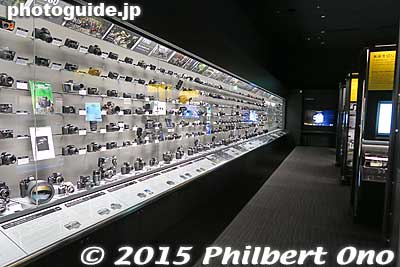
Tokyo has Japan’s highest concentration of photography museums, galleries, and exhibitions. Only one museum is dedicated mainly to photography, while a few other art museums have a significant photography department. Photography galleries are mainly private galleries representing photographers and camera makers’ photo galleries such as by Canon and Nikon. Then there are other spaces large and small which exhibit photography on occasion.
- Tokyo Photographic Art Museum (formerly Tokyo Metropolitan Museum of Photography) – Japan’s largest photography museum in Yebisu Garden Place near Ebisu Station in Tokyo. Note that due to major renovations, the museum of is closed until fall 2016. It will reopen with a new name in English and new URL. The name in Japanese remains the same.
Fine-art photo galleries selling photography in Tokyo include:
- Photo Gallery International (PGI) – Longtime and well-respected gallery.
- Zeit Foto Salon – Another pioneering photo gallery in Tokyo.
- Taka Ishii Gallery – Represents Nobuyoshi Araki and Daido Moriyama.
Private and camera makers’ photo galleries in Tokyo include:
- Canon Gallery Ginza – Photo gallery near Higashi Ginza Station. Exhibits works by photographers who passed the screening for a show. Gallery is part of Canon’s camera showroom and service center.
- Canon Gallery S – Photo gallery near Shinagawa Station’s Konan exit. Exhibits works by prominent Japanese photographers. Map
- Nikon Salon – Photo gallery in Ginza and Shinjuku.
- Nikon Museum – New museum opened in Oct. 2015 on the second floor of Nikon’s head office in Shinagawa, Tokyo. It is to mark the 100th anniversary of Nikon’s foundation in 2017. The swank museum has 580 m² of exhibition space to show all their products, including a showcase of 450 Nikon cameras dating back to 1948. Other exhibits show Nikon’s other products such as steppers, microscopes, and binoculars. Very comprehensive exhibits on Nikon’s history and technologies. There is also a museum shop selling Nikon merchandise like postcards and tote bags.
- Monochrome Gallery RAIN – Fine-art photo gallery near Ikejiri Ohashi Station (Den’en Toshi Line, one stop from Shibuya). Run by a family headed by a fine-art photographer. They curate exhibitions (not a rental gallery) and represent artists. Open only on weekends.
- epSITE Epson Imaging Gallery – Gallery near Shinjuku Station’s West Exit.
- photographers gallery – Photo gallery in Shinjuku.
- Place M – Photo gallery run by Daido Moriyama and others.
- Photobook Diner Megutama 写真集 食堂
Address: 3-2-7-1F Higashi, Shibuya-ku, Tokyo
Phone/Fax: 03-6805-1838
Hours: Weekdays- 11:30~23:00 (last order 22:00)
Weekends /Holidays- 12:00~22:00(last order 21:00), Closed: Mondays (if Monday is a holiday, we will close on Tuesday).
Eatery near Ebisu Station with 5,000 photobooks for customers to browse freely. From the collection of Iizawa Kohtaro, a well-known photo critic.
- JCII Camera Museum (English website) 日本カメラ博物館 Map – Operated by the JCII (Japan Camera and Optical Instruments Inspection and Testing Institute), this museum which opened in 1989 has a collection of over 4,000 cameras made in Japan and overseas. The permanent exhibition shows historical cameras. Special exhibitions are also held. Admission charged. The museum also has an excellent collection of vintage Japanese photographs. Booklets for past special exhibits are available. In the building next door, you can also visit the JCII Photo Salon and library. Near Hanzomon Station (Hanzomon subway line) Exit 4 (Diamond Hotel). After exiting the hotel, go to the right. Then turn right into the first road. Walk a little more and you will see JCII Photo Salon and later the museum on the right in an adjacent building. Phone: (03) 3263-7110
A comprehensive English list of other galleries, museums, and exhibition spaces in Tokyo and Kanagawa (Yokohama, etc.) which may show photography exhibitions is provided by Tokyo Art Beat at the following Web page:
http://www.tokyoartbeat.com/venue/
They also have a list of exhibition spaces in the Kanto area outside Tokyo, such as in Saitama, Chiba, Ibaraki, and Tochigi:
http://www.tokyoartbeat.com/list/venue_area_other
This page lists current photo exhibitions in the Tokyo/Kanto area:
http://www.tokyoartbeat.com/list/event_type_print_photo_bypopular
- Shiotani Teiko Photo Memorial Museum 塩谷定好写真記念館 Map – Shiotani’s family converted Teiko’s Japanese-style home into a beautiful museum showing Teiko’s pictorialist prints. The building is a National Registered Tangible Cultural Property in a rural town called Kotora between Tottori and Yonago cities. Closed Tue. About a 20-min. walk from JR Akasaki Station (San’in Main Line). Phone: (0858) 55-0120
- Shoji Ueda Museum of Photography 植田正治写真美術館 – This chic-looking museum opened in Sept. 1995, housing the photographs of the honorable UEDA Shoji (1913-2000). He is most noted for his Tottori Sand Dune pictures where he places people like objects in the sand. He donated his photographs (about 12,000) to Kishimoto-cho, the town where the museum is located. The crescent-shaped museum itself is a work of art, and the architect, Shin Takamatsu, won an award for it. It’s one of Japan’s must-see photo museums. The museum faces Mt. Daisen, Tottori Prefecture’s most prominent mountain, and the museum is designed to give you a clear view of the mountain. The museum consists of four box-shaped buildings. Three of them are gallery spaces which show his photographs. The fourth building is a giant camera obscura with the world’s largest camera lens on the wall facing Mt. Daisen. When the lens is opened, you can see the outside scene (of Mt. Daisen) projected upside down on the opposite wall.To reach the museum via public transportation, you have to get to Yonago Station first. From there, you can take a local train to Kishimoto Station. The museum is a 5-min. taxi ride from Kishimoto Station. Museum is closed during winter from Dec. to Feb.Few train runs from Yonago, so check the train schedule ahead of time. There are also buses from Yonago Station. However, therre aren’t that many buses and it takes over an hour because it goes to other places before reaching the museum. If you are pressed for time, just take a taxi from Yonago Station to the museum. It will cost about 3,000 yen and 15 min. Phone: (0859) 39-8000
- Yonago City Museum of Art (Yonago-shi Bijutsukan) 米子市美術館 Map – Opened in 1983. The museum’s collection includes paintings, pottery and photographs by local artists. The photo collection has about 650 fine-art prints by Tottori photographer UEDA Shoji, SHIOTANI Teiko, and members of the Yonago Shayukai photo club active in the 1920s and ’30s. Near JR Yonago Station (15-min. walk or 5-min. bus ride, get off at Shiyakusho-mae). Phone: (0859) 34-2424
- Fukuoka Camera Museum ミュゼふくおかカメラ館 – Takaoka, Toyama. A classic camera museum. Holds photo exhibitions on occasion. The beautiful building was designed by Ando Tadao. Small admission charged. Near JR Fukuoka Station on the Hokuriku Line. Phone: (0766) 64-0550
- The Museum of Modern Art, Wakayama (Wakayama Kenritsu Kindai Bijutsukan) 和歌山県立近代美術館 – Opened in 1970, this museum was Japan’s fifth public museum devoted to modern art. It later moved to the current building built in 1994. The museum’s collection centers on print artists. Its photo collection has about 200 prints by Japanese and overseas artists such as SUGIMOTO Hiroshi, MORIMURA Yasumasa, Ei Q, and Cindy Sherman. From JR Wakayama Station, take a bus and get off at Kencho-mae (10-min. ride). Or from Nankai Wakayama-shi Station, take the bus at Bus Stop No. 9 and get off at Kencho-mae (7-min. ride). The museum is across from wakayama Castle and the Wakayama Prefectural Office (Kencho). Phone: (073) 436-8690
- Ken Domon Museum of Photography 土門拳記念館 – In Sakata, a modern museum dedicated to Ken Domon, a legendary Japanese photographer. The museum has 70,000 works by Domon as well as works by past winners of the Domon Ken Photo Award. From Sakata Station (JR Uetsu Main Line), take the Run Run bus for a 16-min. ride. Or from Shonai Airport, take the limousine bus (takes 30 min.). The museum is within Iimoriyama Park. Phone: (0234) 31-0028
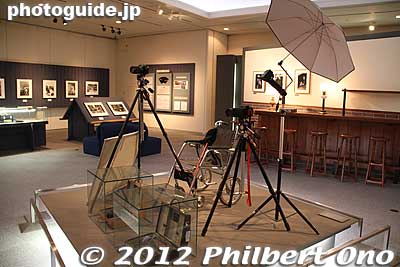
- Shunan City Museum of Art and History (Tokuyama-shi Bijutsu Hakubutsukan) 周南市美術博物館 – Opened in 1995 as a museum introducing the history of Tokuyama and art works by Japanese and overseas artists. The photography collection centers on 1,514 works of renown photographer HAYASHI Tadahiko (1918-1990) who was a native of Tokuyama. There is a very impressive HAYASHI Tadahiko Memorial Room (林忠彦記念室) exhibiting his works. He is best known for portraits of famous Japanese writers (especially SAKAGUCHI Ango sitting in a room full of trashed paper) and post-war photos of a war-ruined Tokyo. The exhibition room even has a replica of a bar in Tokyo’s Ginza that was a watering hole for many writers that Hayashi photographed after WWII. (Photos here) 5 min. by taxi from JR Tokuyama Station. Buses also available, get off at Dobutsuen Bunka Kaikan Iriguchi. On Wed., Fri., weekends, and national holidays, there’s a special bus running once an hour. Get off at Bijutsu Hakubutsukan-mae. Phone: (0834) 22-8800
- Kiyosato Museum of Photographic Arts 清里フォトアートミュージアム – Opened in July 1995 with Hosoe Eikoh as the museum’s director. For its annual “Young Portfolio” project, the museum selects, purchases, and exhibits photos taken by young photographers (under 35) or taken when the photographer was young (in their 20s). Works by many young overseas photographers are also selected for the museum’s collection.
The museum’s basic philosophy is “having a feeling for life” whether its people or nature. Platinum prints (IZU Kenro, etc.) and works by famous overseas photographers (Robert Frank, William Klein, Edward Weston, etc.) are also in the museum’s large collection. Admission charged. At Kobuchizawa Station on the JR Chuo Main Line, transfer to the JR Koumi Line and get off at Kiyosato Station. 10 min. by car from Kiyosato Station. Phone: (0551) 48-5599 - Kawaguchi-ko Museum of Art 河口湖美術館 Map – Public art museum opened in 1991 near the shore of Lake Kawaguchi, one of the Fuji Five Lakes at the foot of Mt. Fuji. The museum’s photography collection centers on the works of OKADA Koyo (1895-1972) who photographed Mt. Fuji. The museum also holds an annual Mt Fuji photo contest and 100 works are selected for an exhibition at the museum during Jan. to March. Admission charged. 10-min. bus ride from Kawaguchi-ko Station on the Fuji Kyuko Line. Take the bus at stop 2 or 4. Phone: (0555) 73-2829
- Shiro Shirahata Photo Gallery 南アルプス山岳写真館・白籏史朗記念館 – Mountain climbers and photographers will enjoy the museum’s display of photos of Japan’s southern alps taken by the late SHIRAHATA Shiro, a noted mountaineer photographer. About 40 of his photos are displayed from a collection of 150. The museum opened in a new and much larger building in 1991. Admission includes entry to the nearby History and Folk Museum (Rekishi Minzoku Shiryokan). From Minobu Station (JR Minobu Line), take a bus (for Narada) and get off at the last stop. Phone: (0556) 48-2552
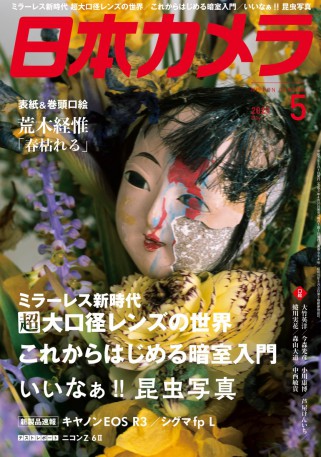
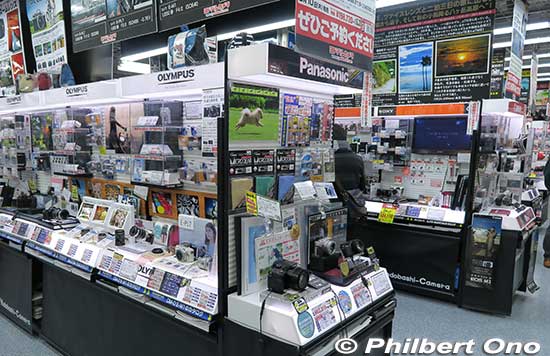
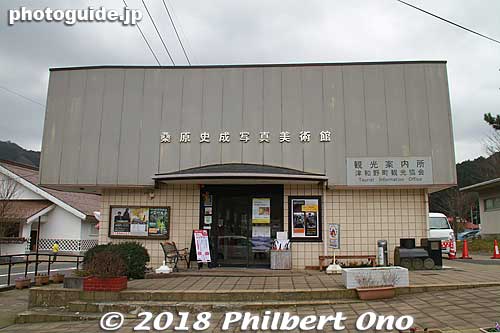
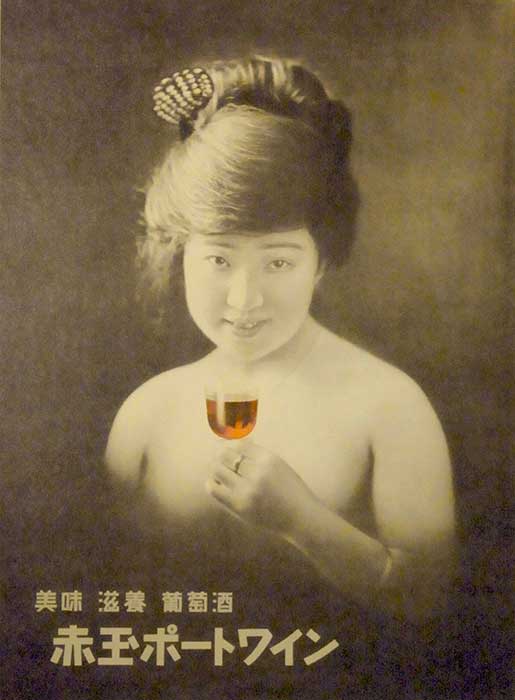
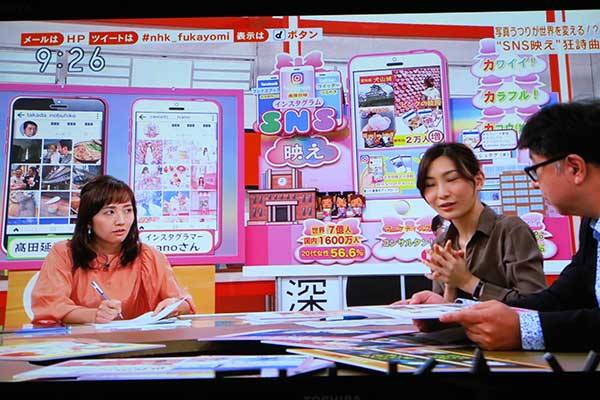
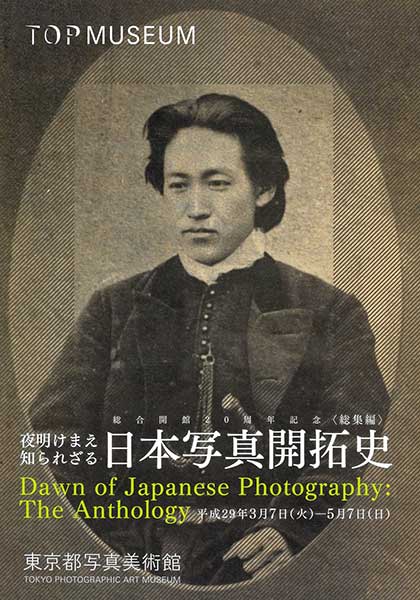
1 Comment